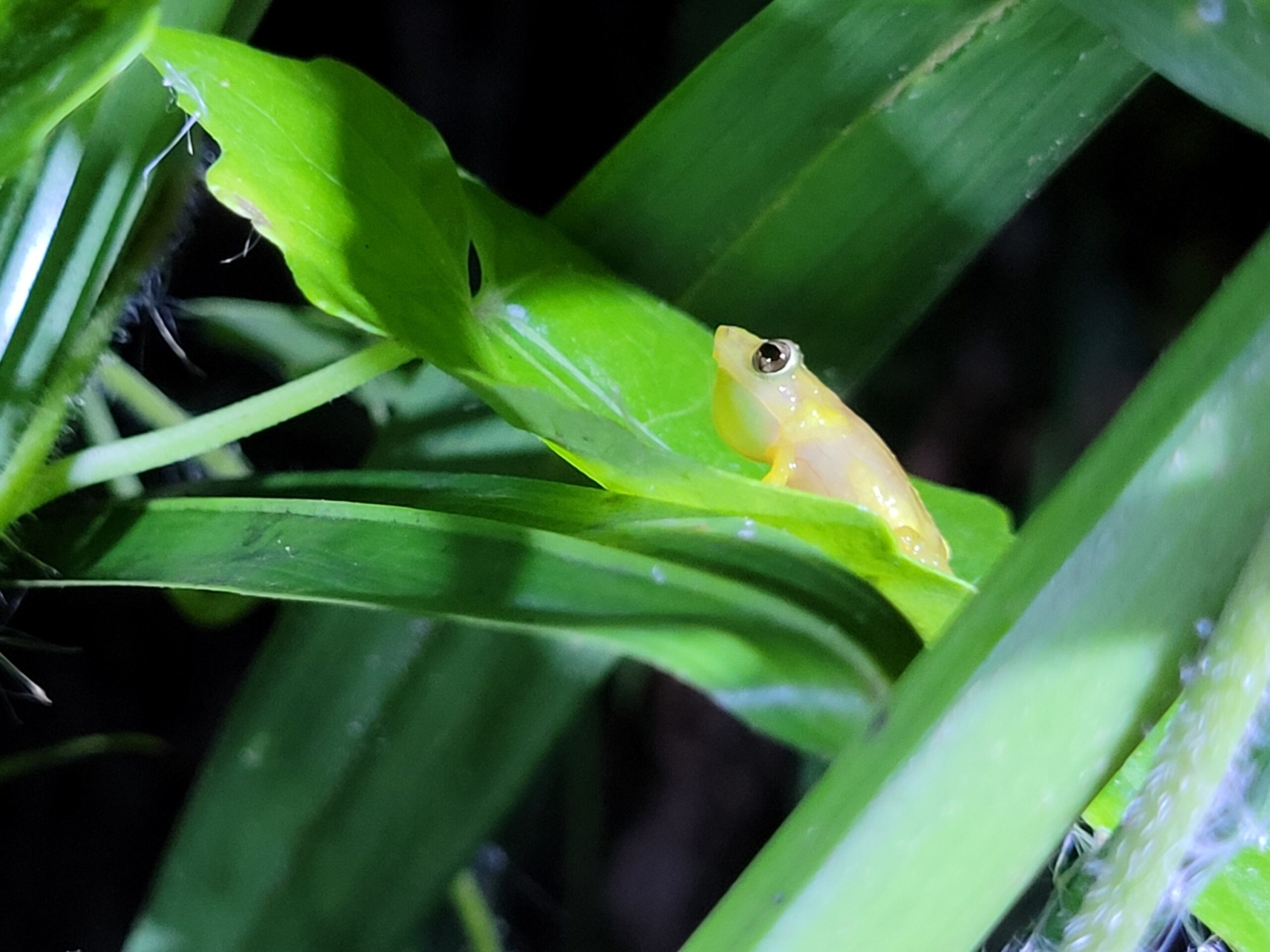How a Common Economic Theory Could Help Save Endangered Frogs

A common theory that guides financial investment strategies may be a handy tool to protect an endangered Puerto Rican frog. A new study uses modern portfolio theory to identify future “investments” in natural resource management that may help managers decide which actions to take to protect coquí llanero populations in Puerto Rico.
The 17 species of coquí frogs, and their signature high-pitched chirp, are considered unofficial mascots of Puerto Rico. The entire population of coquí llanero frogs, the smallest and possibly most endangered of the island’s coquís, is limited to just three small freshwater wetlands on the island’s northern coast. This leaves them vulnerable to major storm events, rising sea-levels, and other changing climate conditions.
“There’s only so much the coquí can do on their own to avoid climate risks,” says Mitch Eaton, lead author of the study and SE CASC Research Ecologist. “So, it’s important that we think about how to manage and mitigate risk within this complex ecosystem.”
Modern portfolio theory comes from the field of economics and is a strategy that many of us have likely used to build a stable portfolio of retirement investments. When we make investments, we are participating in financial markets with risk and uncertainty. Modern portfolio theory says that the most stable investment portfolio within this uncertain environment is a combination of assets that respond in opposite ways to changing market conditions. For example, retirement investments are usually a mix of riskier stocks that have higher rewards and more conservative bonds that offer lower returns. How much you invest in stocks versus bonds within that portfolio is determined by how much risk you are willing to take.
But what do retirement accounts have to do with endangered frogs in Puerto Rico?
Natural resource managers also deal in assets and investments. Like the stock market, future environments and climates are uncertain, and managers make investments within this uncertainty, like purchasing parcels of land to place under protection, restoring habitats, and relocating species. In this study, the researchers evaluated whether modern portfolio theory could also be used to identify investment opportunities to help conserve the coquí.
“Diversification of investments is kind of a magic bullet for stability under future market uncertainty,” says Eaton. “The idea behind using modern portfolio theory is to manage risk under future climate uncertainty, and to help managers consider investments more carefully with realistic variables like budget constraints.”
Researchers created models that took into account currently protected habitats, future sea-level rise scenarios, and future precipitation and temperature projections. They also incorporated a range of future funding levels, or rather, different amounts available for managers to invest.
Within this model, the researchers built two portfolio analyses that traded off cost and risk. One portfolio strategy maximized conservation benefits, constrained only by budget levels. The other portfolio strategy traded off potential benefits in favor of lowering risk, but also subject to funding constraints.
Under the benefit maximization strategy, the costs were minimized by investing in relocating frogs to already protected areas. Whereas under the risk-benefit tradeoff strategy, the model prioritized high cost investments of buying new parcels of land specifically to relocate the frogs, resulting in a lower risk of extinction. Using these portfolios, the study found that relying on existing protected areas may not be enough to mitigate future climate risks, and that investing to conserve additional habitats may be worth the cost.
The study also identified possible sites for the frogs on the eastern side of Puerto Rico, which came as a surprise to the researchers since the current distribution of the species is limited to the northern coast. This could offer managers more options to protect the coquí llanero by increasing the geographic footprint of the species.
“Ideally, modern portfolio theory acts as a handy tool for managers that gives them a new way of thinking about how to approach the implementation of management actions over space, in other words, how to pool their investments to manage risk and achieve maximal benefits,” says Eaton.
Modern portfolio theory has many potential applications for species and scenarios beyond the coquí llanero, but there are two important limitations noted in this study. The first is that the current application only considers one species when assessing the competing conservation actions. The other is that applying these high-cost investments into the real world requires more detailed consideration of local conditions like the costs of conservation or restoration of specific parcels. Even so, modern portfolio theory could be applied to a range of species, resource management needs, and uncertain futures.
The paper, “Applying portfolio theory to benefit endangered amphibians in coastal wetlands threatened by climate change, high uncertainty, and significant investment risk,” was published in Frontiers in Conservation Science on October 6, 2024. The paper was co-authored by Adam Terando from the U.S Geological Survey Southeast Climate Adaptation Science Center and Jaime Collazo from the North Carolina Cooperative Fish and Wildlife Research Unit. This research was supported by the U.S. Geological Survey’s Southeast Climate Adaptation Science Center Cooperative Agreement No. I22000978.